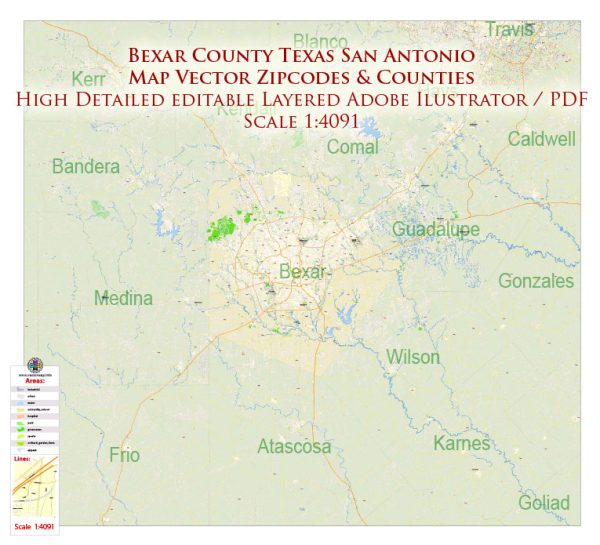Bexar County, home to the city of San Antonio, Texas, has a rich history of urban development that spans several centuries. Here is a brief overview of the history of urban development in the area:
- Spanish Colonial Era (18th Century): San Antonio was founded as a Spanish mission and presidio in 1718, making it one of the oldest continuously inhabited cities in the United States. The city’s original layout, including the famous Alamo, was centered around the San Antonio River. The Spanish influence is still evident in the city’s architecture and street names.
- Mexican Period (early 19th Century): During the Mexican period, San Antonio continued to grow, and the city played a significant role in the struggle for Texas independence. The Battle of the Alamo, in 1836, is one of the most famous events from this era.
- Republic of Texas and Statehood (19th Century): San Antonio became a part of the Republic of Texas and later the state of Texas in the mid-19th century. The city’s population grew, and urban development expanded. New neighborhoods, businesses, and infrastructure were established.
- Civil War and Reconstruction (mid-19th Century): The Civil War had an impact on San Antonio’s development, and during the Reconstruction era, the city began to rebuild and modernize. Railroads and telegraph lines were introduced, connecting San Antonio to other parts of Texas and the country.
- Late 19th and Early 20th Century: The late 19th and early 20th centuries saw significant urban development in San Antonio. The city’s population continued to grow, and this period brought advancements in transportation and infrastructure. The famous San Antonio River Walk was constructed in the 1930s as a flood control project, which transformed into a major tourist attraction.
- Military Presence: San Antonio has a long history of hosting military installations, including Fort Sam Houston, Lackland Air Force Base, and Randolph Air Force Base. These bases have contributed to the city’s economy and urban development.
- Modern Era: San Antonio’s urban development continued throughout the 20th century, with the expansion of suburbs, the construction of highways, and the development of a diverse economy. The city is known for its unique blend of cultures, including Spanish, Mexican, and German influences.
- Economic Growth and Tourism: Today, San Antonio is a thriving metropolitan area with a diverse economy that includes healthcare, tourism, military, and technology sectors. The city’s historical sites, cultural attractions, and annual events draw millions of tourists each year.
- Challenges and Planning: Like many cities, San Antonio faces challenges related to urban growth, infrastructure, and transportation. The city has been working on various initiatives to address these issues while preserving its rich history and cultural heritage.
San Antonio’s history of urban development reflects its multicultural heritage and its status as a vibrant and dynamic city in Texas. It has evolved from a Spanish colonial outpost into a major urban center, and its history continues to shape its unique character and development today.


 Author: Kirill Shrayber, Ph.D.
Author: Kirill Shrayber, Ph.D.